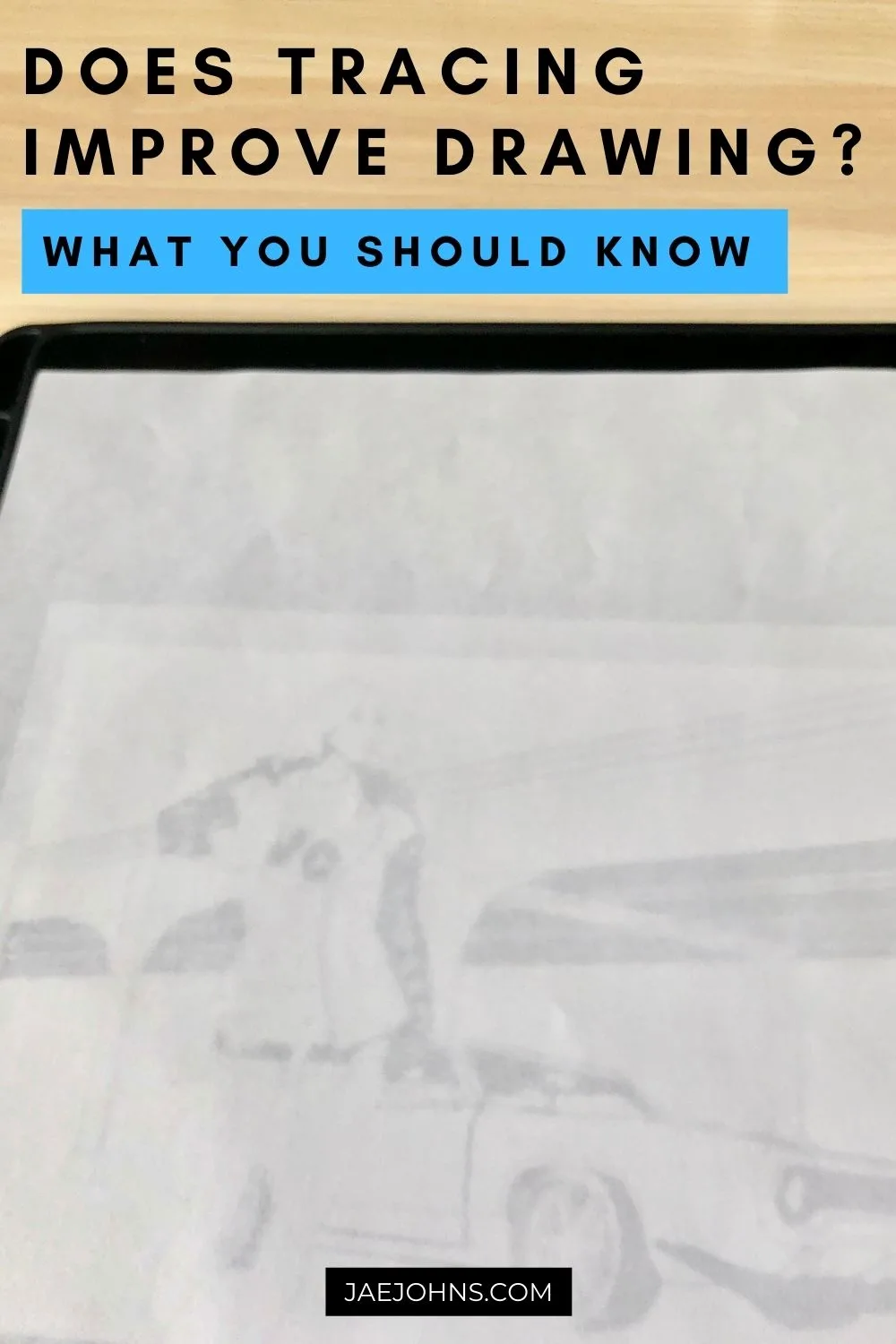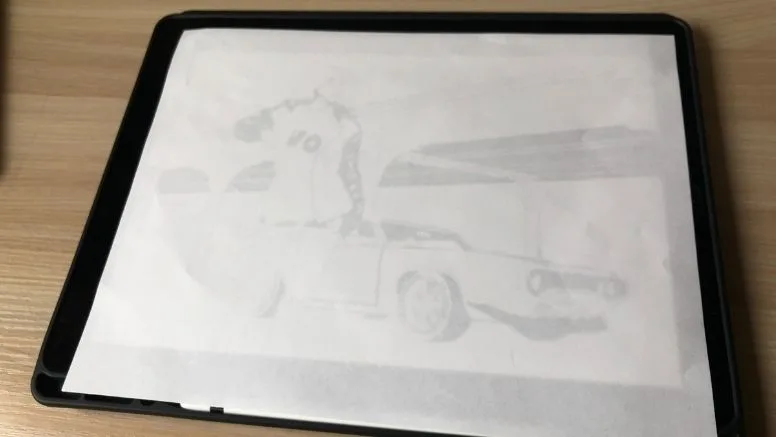If you’ve ever wanted to recreate a picture, you might have taken up tracing. You might have even been curious if you could learn to draw by tracing. Or, if you started your drawing journey by tracing images first, does tracing help improve drawing?
Tracing pictures does help you improve on your drawing in many ways. The short explanation is that tracing helps you learn the strokes that will allow you to draw the original picture on your own.
Tracing Versus Drawing
Before we talk about how tracing can help you draw, let’s talk about what tracing is and how it can help. Tracing is a way of copying someone else’s work.
As we said before, it’s a way to ‘photocopy’ a picture but through your hand instead of a printer. Why would tracing be proper?
Well, it allows beginner artists to understand the form, space, and visual cues. Think about this: you want to draw a squirrel, but you have no notion of its anatomy.
Instead of spending uncountable hours chasing squirrels and trying to get them to pose for you, you could print out a picture of a squirrel and trace over it.
You’d be copying someone’s work but what’s more important is that you’d be learning the squirrel’s anatomy.
You will understand this instantly if you know the concept of muscle memory. Humans have an inbuilt memory system called muscle memory that allows them to remember their physical actions and routines.
That’s why if you go to the gym and do one exercise for days in a row, your body will remember how it goes, and you’ll be able to do it even if you’re not paying attention.
It’s the same principle as tracing. Once you’ve traced over the same sorts of images for a prolonged number of hours, you’ll be able to do it without the original picture.
You will be able to draw it on your own. Do you see where we’re going with this?
Another way that tracing is used is by comic book artists. Comics require a lot of repetition of the same characters, scenes, and speech bubbles.
Comic artists would be exhausted if they tried to draw each frame in a comic separately. So, what do they do?
They trace! Tracing is incredibly useful because they just need to copy the existing character or scene and make some slight changes to it.
This ensures that the comic strip remains consistent and the visuals aren’t haphazard or ad-hoc as the comic goes on.
On the other hand, drawing involves you creating an original picture. You can use reference pictures to create a single image that’s all your own.
Drawing is a skill that takes a lot of time and patience to learn, so if you can’t pick it up right away, don’t be disheartened!
What Materials and Techniques can you use to Trace?
You will need a few basic materials to trace. They are listed here:
- Your reference picture – make sure it’s as straightforward as possible so you can copy the strokes with ease
- A plain paper – you can pick whichever size corresponds with your picture
- A pencil – the lead depends on what kind of strokes you want to create
- Tracing paper – there are many options available on the market
- Carbon paper
- A window with light coming through
- Tape – masking tape is preferred to hold down your picture and the tracing paper on top.
Let’s talk tracing techniques:
- The pencil scrub: Take the picture you want to draw (this works for tracing smaller images). Flip over your picture and use your pencil to rub tight lines across the back of your illustration. Then, flip the picture right side up and put it on top of the blank paper. Use a sharp pencil to draw over the picture you just traced. The pressure will leave the outline of the original picture on the paper below!
- Tracing paper: simply take your tracing paper, put it on top of your original picture, and use light pressure to recreate the drawing. It will be transferred onto the tracing paper, and you’re all done!
- Carbon paper: use carbon paper to transfer your drawing straight onto your blank paper. Place the carbon paper underneath the actual picture and use pressure to transfer the strokes onto the plain paper underneath.
Does Tracing help Improve your Drawing?
Yes! Tracing helps improve your drawing skills. This is because tracing helps you become familiar with different images and subjects.
You can practice outlining and shading an existing picture until you’re confident enough to draw it without the tracing paper. This dramatically helps you adapt to the strokes and pressure needed for the various things you want to draw.
If you want to learn how to use tracing to improve drawing, start by tracing basic shapes. Next, you can start tracing shapes that are harder to draw and trace.
Finally, end it by trace things that would be very hard for you to draw. Think of whole scenes and imagery instead of standalone objects. You should spend sufficient time on each stage of this process for you to learn to draw.
Keep in mind that drawing, unlike tracing, is not an exact science. You don’t have to be precise or meticulous with your strokes. Drawing is all about bringing your creative ideas to the canvas or paper.
This means taking liberties with the final form of the image and not having to stick to rigid lines or strokes. Take your time with it, and you’ll be drawing in no time!
Is Tracing a Good Way to Learn to Draw?
Tracing is a great way to learn to draw. When you copy others, you can discover things that work for you much faster than if you were trying to draw things on your own.
A few benefits of tracing art
- Learn to draw faster
- Discover what works for you and what doesn’t
- Improve your line drawing techniques
- Improve your observational skills
If you think about it when you learn how to do anything else like driving a car, riding a bike, or cooking you are essentially copying someone else.
For some reason, there is a concern with copying and drawing, but it is perfectly fine to trace artwork for the sole purpose of you getting better with your art. Do not trace art and claim it as your own, but you can trace as a way to learn to draw.
Tracing art is a great educational tool to help you learn drawing faster.
Read Also:
- Can Drawing Tablets Work without a Computer?
- Can Drawing Be Learned?
- The Ultimate List of Skills You Need to Begin Drawing
- 25 Must-Have Drawing Tools for Beginners


